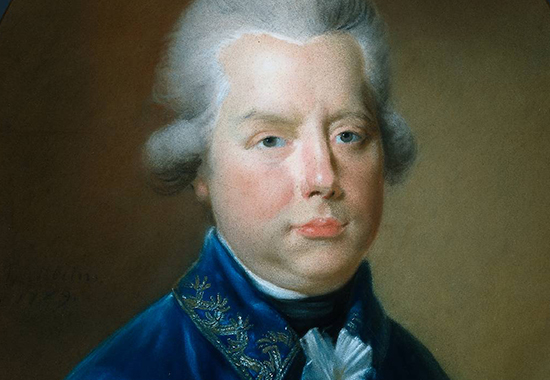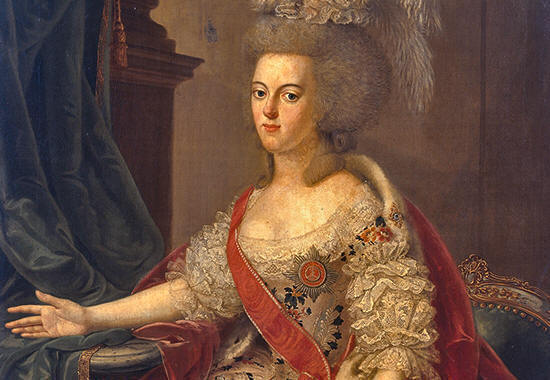|

Prince William V 1748-1806
Last of the Stadtholders
William, or
Willem
as the Dutch called him,
was the prince of Orange and Nassau.
|
|
Image Above
Stadholder Prince William V (1748-1806)
Detail from Johann Friedrich
August Tischbein's chalk pastel on vellum, created in 1789.
Rijksmuseum |
William was the last stadtholder, which you can also
spell stadholder or stadhouder, of the
Dutch Republic, and
reigned as such from 1751 until 1795.
He encountered rocky times
during his reign thanks to the Dutch Patriot movement.
William's Life
William V Batavus was born on
March 8, 1748, at The Hague, Netherlands.
His father was
William IV, who lived
1711 - October 22, 1751.
His mother was
Anne of Hanover, who
lived 1709 - January 12, 1759.
William V became stadtholder
upon his father's death, he was three years of age. His
mother, Princess Anne of Hanover, ruled in wee William's
stead until her death in 1759. After that the
Duke Louis Ernest of Brunswick-Wolfenbüttel
performed this task.
William turned 18 in 1766 and
began to rule himself, keeping the Duke of Brunswick as his
counselor.
On October 4, 1767, William V
married Wilhelmina of Prussia.
Wilhelmina, in turn, was the sister of the future
 Frederick
William II, King of Prussia, which would come
in handy in 1787 against the Patriots (see below). Frederick
William II, King of Prussia, which would come
in handy in 1787 against the Patriots (see below).

Frederika
Sophia Wilhelmina of Prussia (1751-1820), wife of Willem V
Painting by Benjamin
Samuel Bolomey, 1770
Rijksmuseum
In 1772, William and Wilhelmina
had a son, who would grow up to become
King William I of the Netherlands.
1780-1784
 Anglo-Dutch War
Anglo-Dutch War
In 1785, William left The Hague
because of the Patriot rebels.
1787
 Dutch Patriots' Revolt
Dutch Patriots' Revolt
By October 1787, and thanks to
Prussian support, William V of Orange had the Dutch Crisis
under control.
 Check this event in the timeline of
the French Revolution.
Check this event in the timeline of
the French Revolution.
William returned to The Hague in late 1787.
The French, led by General
Charles Pichegru, ended
William's reign in January 1795 when they invaded the
Netherlands.
William V fled to England on
January 18, 1795. The French proclaimed him officially gone
on February 23, 1795, and installed the Batavian Republic.
In November 1802, William moved
to his Nassau estates on the mainland (Germany).
William V died on April 9, 1806,
at Braunschweig (Brunswick), Germany.
See also
 Governments of the Netherlands.
Governments of the Netherlands.
More History
|